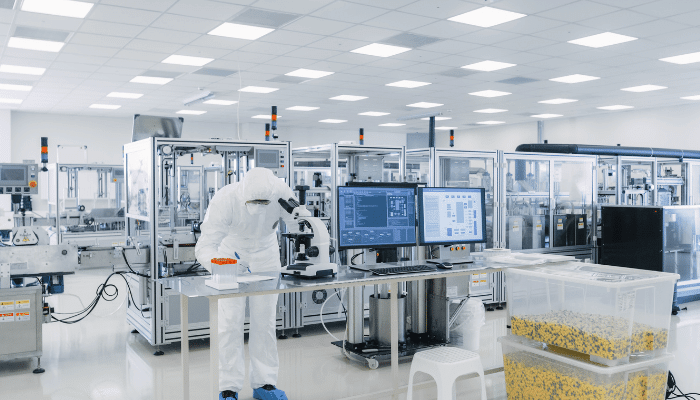Why Contextual Data is a Necessity for the Plant Floor of the Future
Yes, Contextual data is a requirement for the plant floor of the future, most definitely not just the icing on the cake. Further on that point, we may be talking about the not-so-distant future. Or even right now, today.
Before we get into it, here is the definition of contextual data: information or a set of circumstances that form the setting for an event or idea for a thing in terms that it can be fully understood and assessed.
Throughout the remaining parts of this article, I will explain to you why contextual data is absolutely a requirement. Also, why you should get started now before you get left behind.
The State of the Manufacturing Industry Today
The majority of manufacturers today are aware that we are exiting the 3rd industrial revolution, and Industry 4.0 is making its grand entrance. Let’s quickly recap why this is so important that I felt it was necessary to make this the first major point in this article.
Industry 3.0
Machine automation. Cool, right? Yes, machine automation has been huge for the manufacturing industry and is of course still extremely relevant and valuable today. However, there’s another level to it now, now we can automate much more than just machines on the plant floor.
Industry 4.0
Business process automation. This is the next step. Industry 4.0 does not completely reinvent the modern-day physical factory. Factories actually look extremely similar to Industry 3.0. What it does do, is reinvent the way we approach processes and unlocks the “hidden factory.” The hidden factory is all of the data and information that has been trapped inside of machines from Industry 3.0 that simply could not be extracted or used before. Industry 4.0 ties the whole company together to, once again, automate business processes. You have the back office, the plant floor, and everything in between- Industry 4.0 brings the capability to fluently make these departments or sections of the company work together for better business.
Don’t forget Your other Half
The back office portion of manufacturing companies has already been revolutionized Industry 4.0 style with ERP systems. One problem is that many people believe that ERP systems can act as an MES or IIoT system. ERP systems aren’t built for this, and they are simply incapable. ERP systems are for the back office, they do a great job at what they do, but that job does not take place on the plant floor.
What you need, is the plant floor version of an ERP- a system that can collect and analyze data + communicate effectively with other systems (such as your ERP system). This is called an MES (manufacturing execution system). ERP systems came along and they made a huge impact, they’re standard today. Now, MES is next. MES bridges the gap between the back office and the plant floor.
Why is this Important?
MES and IIoT (Industrial Internet of Things) systems provide contextual data from the plant floor. These systems complete the circle that allows each section of the company to gather, analyze, and share contextual data to automate business decisions. Contextual data drives business decisions. This is what Industry 4.0 is all about, and this is the (not so distant) future of manufacturing.
Enough explaining why this information is so important to manufacturing companies- Let’s get into the how, and some examples.
Machine Data + Contextual Data
Machine data on its own is okay. Getting dates and times detailing when a machine was down is helpful information. What if you knew why the machine was down, what caused the downtime, the symptoms, and reason codes. Would this information be helpful? Would it assist you in making a decision to improve productivity and your process? Absolutely!
Having basic data to analyze the most common causes for downtime code by occurrence and duration goes a long way in helping you solve downtime issues for your machine. But think about all of the other data in your company and the data surrounding that machine. Name of the operator, job or part being run on the machine, the shift, the level of training of that operator, and a host of other data points. When looking at the downtime of the machine would it be helpful to not only know why the machine was down but also what part was being produced, who the operator was, etc? Again, of course!
How You Can Gain Access to Contextual Data
So, how do we connect the contextual data with the machine data to get extreme value? Answer: Through thoughtful planning, an open mind to new ideas, use of best practices, and open nonproprietary technology.
For Simple, but also More Complex and Challenging Scenarios:
We implement architectures that use MQTT data brokers, the unified namespace, and open technology tools. The data broker and a unified namespace are two key pieces of the puzzle that enable us to combine the machine data with many layers of contextual data from the rest of the plant. We have multiple videos on our YouTube channel which describe how these architectures work and how quickly they can be put in place.
Don’t be part of the 92%
11 out of 12 companies fail industrial transitions and end up either 1. Going out of business or 2. Getting bought out. Historically, this has happened throughout the first 3 industrial revolutions. Now, as the 4th industrial revolution has begun, it’s important to be adaptable. Adjust to the changes in the manufacturing landscape, and fall in line with that 8% of companies that successfully make the transition.
In order to remain competitive and stay in business today, you need to take the next step, create a data-driven company culture, and be proactive.
If you have any questions at all, don’t hesitate to leave us a message here. We have decades of experience in the industry and we could talk about data-driven manufacturing, contextual data, Industry 4.0, and similar topics all day long.








